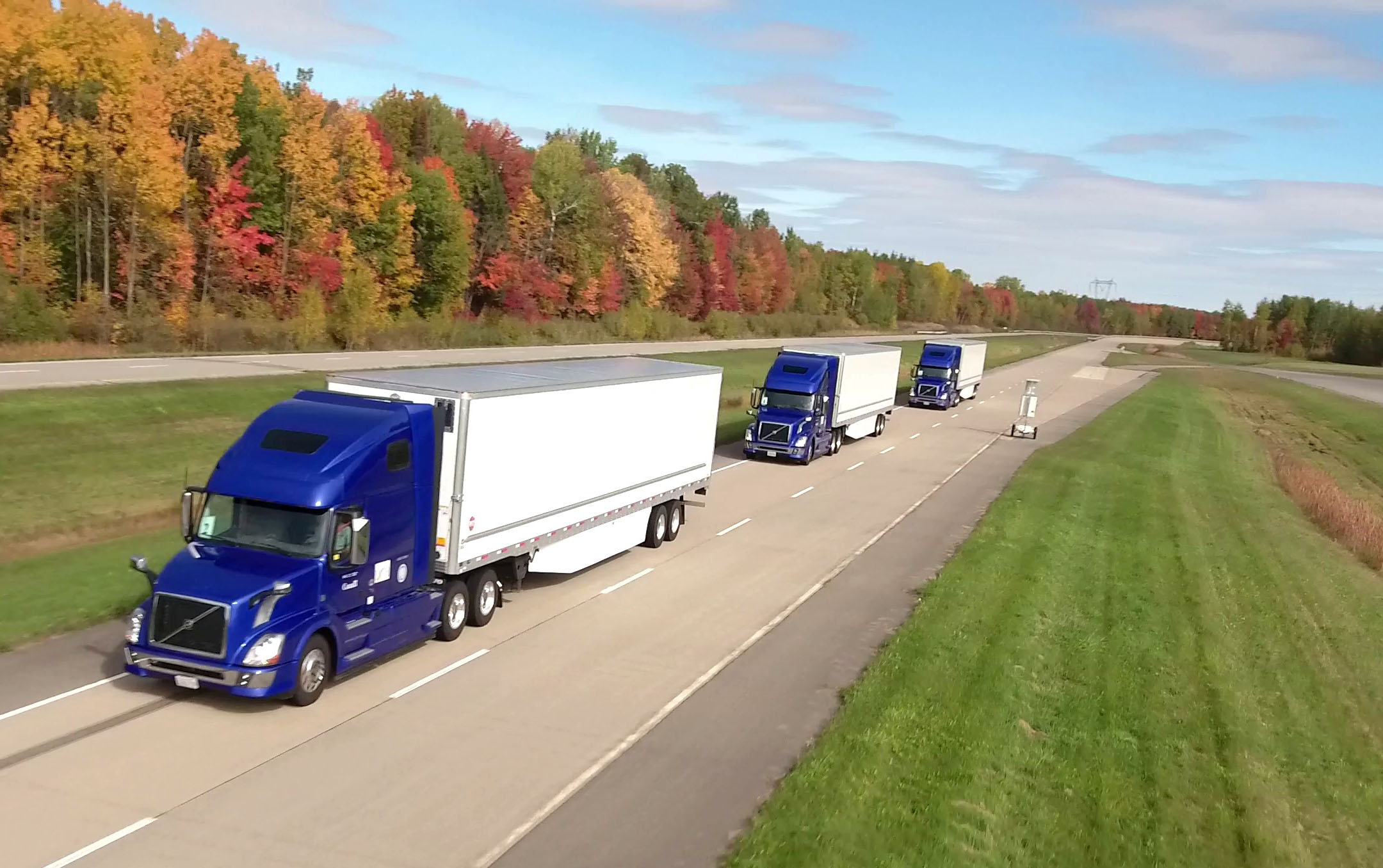Executive Summary
Vehicle-to-Vehicle (V2V)-based cooperative truck platooning systems are nearing commercialization. However, there is a knowledge gap in terms of the reliability and resiliency of these systems. Under a U.S. Federal Highway Administration (FHWA) Exploratory Advanced Research Project, the University of California (Berkeley) Partners for Advanced Transportation Technology (PATH) has been developing and testing three-truck platooning technology using cooperative adaptive cruise control (CACC), in collaboration with Volvo Trucks. Transport Canada has been successful in partnering with PATH to secure the PATH CACC system for testing and evaluation purposes at TC’s Motor Vehicle Test Centre (MVTC). The National Research Council Canada (NRC) supported TC’s effort to host the fuel-consumption testing campaign for the PATH truck-platooning technology demonstrations. The NRC, under direction from TC and with support from FPInnovations PIT Group, conducted a modified version of the SAE J1321 Type II fuel consumption test procedure to evaluate the fuel-savings benefits of platooning for various aerodynamic tractor-trailer configurations. Other project partners included the California Department of Transportation (Caltrans), PMG Technologies , Centre de Formation du Transport Routier de Saint-Jérome (CFTR), and Environment and Climate Change Canada (ECCC).
Four tractor-trailer combinations were used as part of the fuel-economy tests: the three identical test vehicles with the CACC control systems, and a control vehicle. Auxiliary fuel tanks were installed on the vehicles to permit direct measurement of the fuel use during each measurement run using a gravimetric fuel-weighing procedure.
A test program was devised, through consensus by the project partners, to examine the influence of four parameters on the fuel-savings potential of the three-truck CACC-based platoon:
- Separation Distance/Time: 17 m (57 ft) to 43 m (142 ft), equivalent to 0.6 s to 1.5 s at
- 105 km/h (65 mph).
- Truck configuration: standard trailer vs. aerodynamic trailer.
- Vehicle speed: 89 km/h (55 mph) and 105 km/h (65 mph).
- Vehicle weight: 14,000 kg (31,000 lbs) and 29,400 kg (65,000 lbs).
For the range of test conditions examined, the net fuel savings for the full vehicle platoon was measured to be between 5.2% and 7.8%. The combined effect of platooning and aerodynamic trailer devices was measured to be up to 14.2% at the shortest separation distance of 17.4 m.
The major findings of the study include:
- At the shorter separation distances tested, a decrease in fuel savings was observed with increasing distance. Beyond about 22 m for the standard trailer, for which the platoon averaged fuel savings was measured to be 5.2%, no significant change in fuel savings was observed. For the aerodynamic trailer configuration, no significant change was observed beyond 34 m for which the platoon-averaged fuel-savings was measured to be 5.7%.
- The lead vehicle showed no significant fuel savings for the tested separation distances of 26 m and greater. At the shortest separation distance tested (17 m), a small fuel savings on the order of 1% was observed for some of the test conditions.
- For the range of separation distances tested (17 m to 44 m), and for the standard and aerodynamic trailer configurations, the trailing vehicle experienced the highest fuel savings of the three vehicles (approximately 3% higher than the middle vehicle).
- The aerodynamic-trailer configuration experienced a greater percentage fuel savings from platooning than did the standard-trailer configuration (0.5% to 2% higher depending on separation distance).
- No significant effect of vehicle speed on the fuel savings from the CACC platooning system was observed based on the tested speeds of 89 km/h (55 mph) and 105 km/h (65 mph).
- An increased fuel savings of 1.6% associated with the vehicle CACC platooning system was observed for the empty trailer, compared to the loaded trailer.
The results of this study have demonstrated some of the potential fuel-savings benefits of vehicle platooning for a range of test conditions, and highlighted additional knowledge gaps. Recommendations are provided for follow-on testing.
The full report can be found at: http://nparc.cisti-icist.nrc-cnrc.gc.ca/eng/view/object/?id=d21e1097-5d30-4a0f-b742-35ffad931c2f
